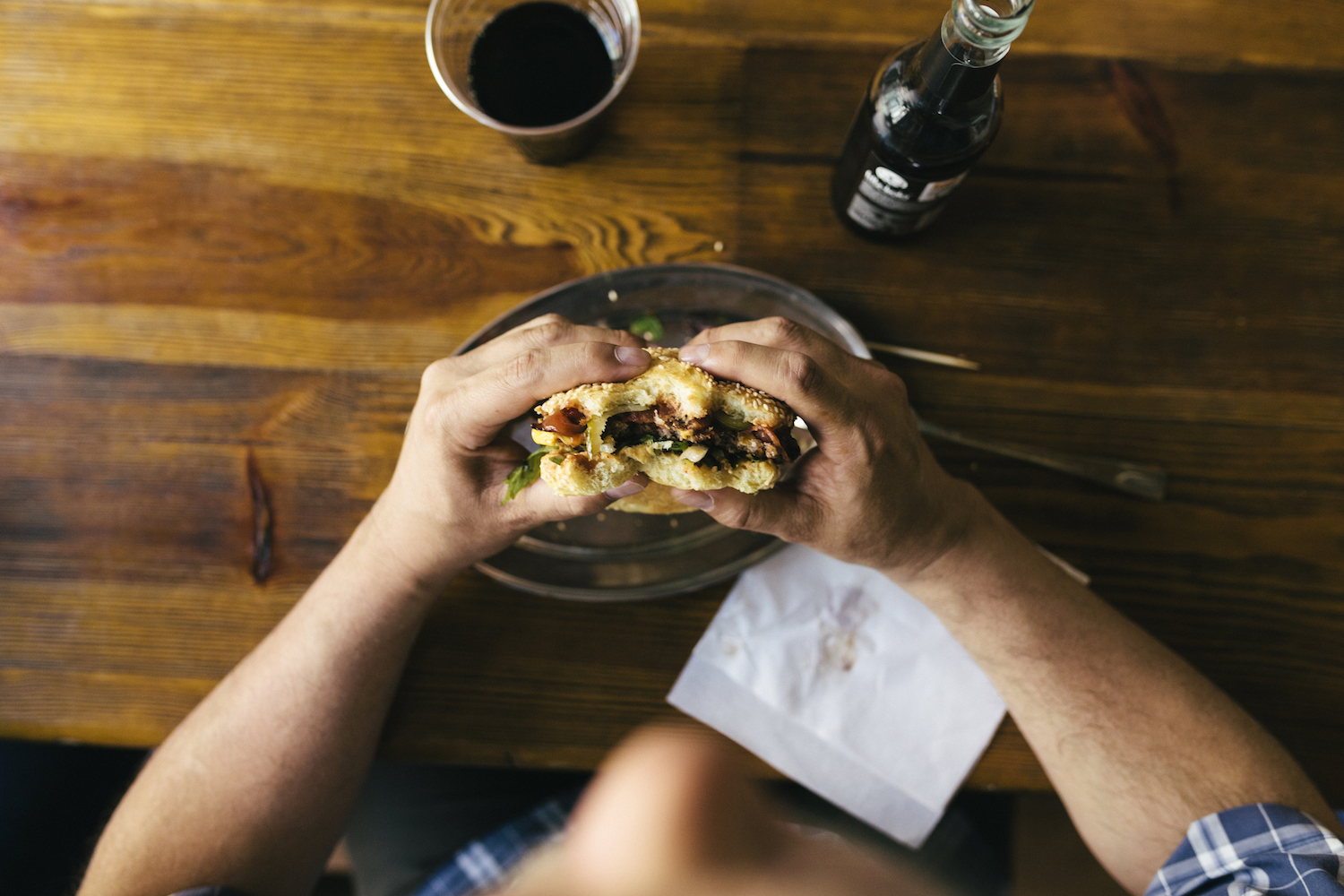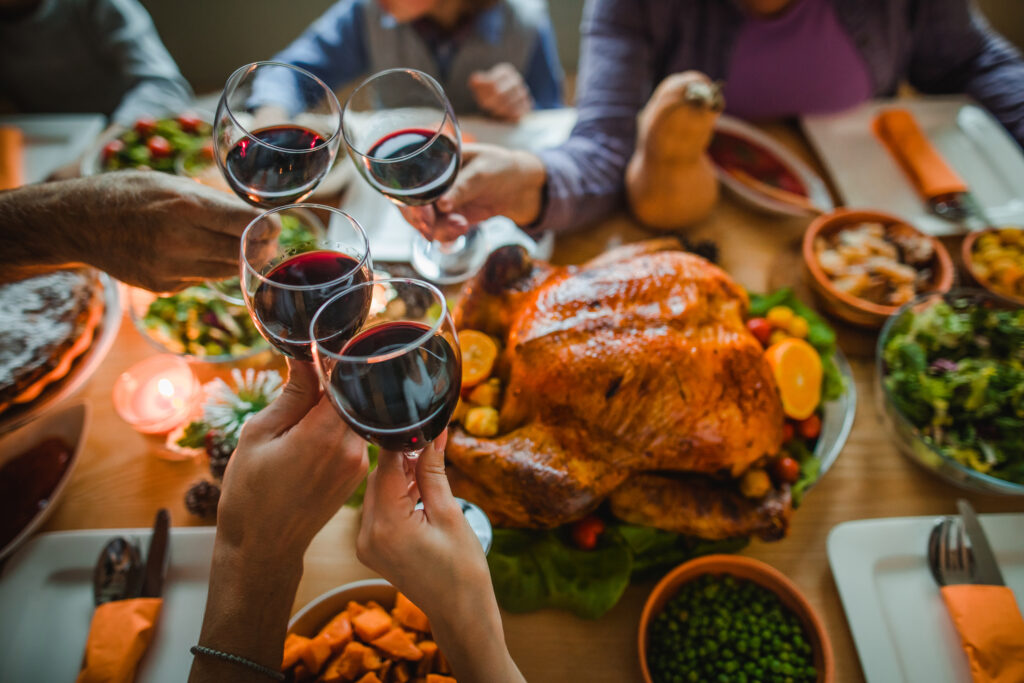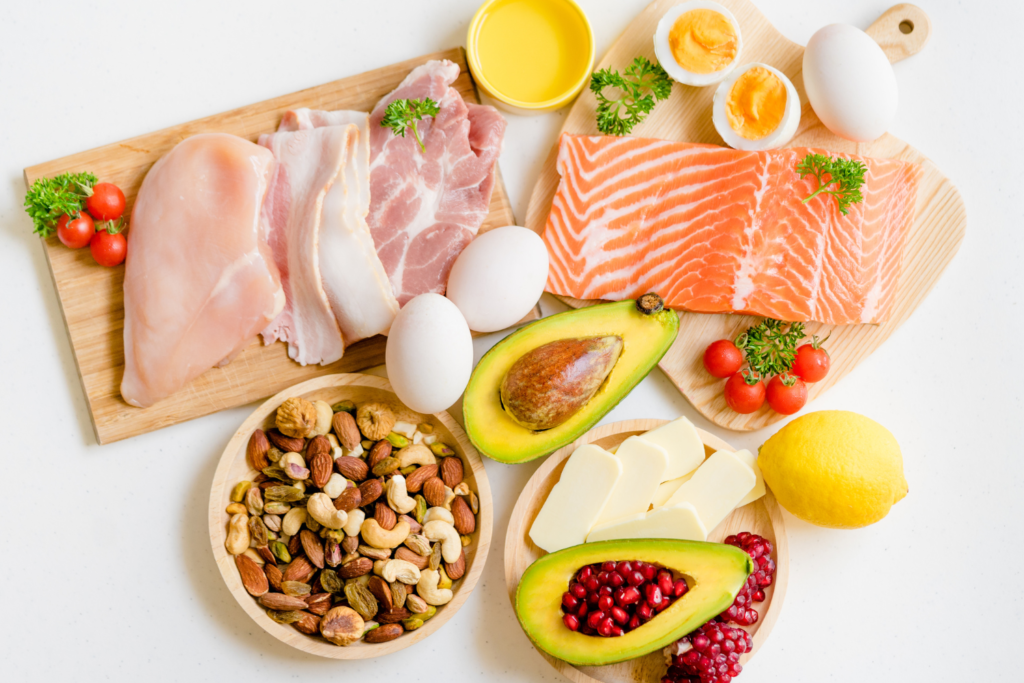Losing weight is a battle, meaning victory is not always linear. At first, you might lose weight every time you step on the scale. Then, the numbers start to slow before staying completely stagnant. When this happens you’ve hit the dreaded weight loss plateau.
It’s a bummer when your fat loss slows, but hitting a weight loss plateau is completely normal.
“The leaner you get, the harder it gets to lose those last few kilos,” says Tony Gentilcore, C.S.C.S., owner of CORE in Brookline, Massachusetts. As you continue losing weight, your metabolism starts to slow down, so you either need to eat fewer calories or burn more calories to see continued weight loss.
A 5 to 10 per cent decrease in body weight can drop your metabolic rate by about 15 per cent, says Holly Lofton, MD, obesity medicine expert at NYU Langone. “This is why the last five kgs are so hard,” she says.
But it is possible to lose fat after a plateau. Here, are 12 ways you can get back on track.
Eat enough protein
Your metabolism slows when you lose weight because your body doesn’t require the same level of energy to maintain your size, according to Roy Gildersleeve, RDN, LD at the Ohio State University. Then, you have to account for the loss of muscle mass which naturally occurs when you shed pounds. The more muscle you have, the more calories you burn, so “the goal is to preserve that muscle,” says Gildersleeve. To do this, you’ll want to keep protein intake between .8 grams to 1 gram of protein per kilograms of body weight.
Portion out your food
A lot of guys devalue the importance of portion sizes, says Gentilcore. You might think to eyeball the amount of food you eat isn’t doing much harm, but it can make a big difference when you’re trying to shed those last few pounds.
Say, if you add just a couple extra tablespoons of peanut butter to your daily smoothie, that’s around 120 extra calories, adding up to 840 extra calories a week.
“As you get a little bit closer to your target weight, you have to be a bit more meticulous,” says Gentilcore.
If you’ve stopped seeing results, you need to pay attention to portion control. First, familiarise yourself with what you should actually be eating. For instance, a serving of beef is 85grams (about the size of a deck of cards) and a serving of ice cream is half a cup (about the size of half a tennis ball). Then, measure it out, Gentilcore says.
After you get used to what that amount looks like, you can go back to eyeballing your portions. Here are 12 easy ways to estimate servings sizes if you need a place to start.
Don’t treat yourself too often
What’s the harm of one brownie after a hard workout, right? Well, that kind of mindset can stunt your weight loss, says John Raglin, Ph.D. an exercise researcher at Indiana University Bloomington’s School of Public Health.
“You could run an extra five kms, but it’s really easy to reward yourself with more than 500 calories,” he says. “The reward usually far exceeds the extra calories you expended.”
These excess calories stack up: If you eat a 500-calorie treat several times a week, that could be an extra day’s worth of calories each week, or more than 6,000 calories per month. And that can make a big difference if you can’t seem to move the scale, says Raglin.
Instead of binging on a sundae because you “earned it,” choose smaller portions of treats you really love, suggests Raglin, like a really decadent piece of dark chocolate or one scoop of your favourite, high-quality vanilla ice cream.
Here’s one rule to go by: Only 10 to 20 per cent of your daily calories should come from junk food, says Men’s Health nutrition advisor, Alan Aragon. If you feel like you’re not seeing results, try to stick to the 10 per cent range if a craving hits—so if you’re an active guy eating about 2,800 calories a day, that treat should only be around 280 calories.
Don’t overestimate activity level
When you start working out more, you might experience something called “compensatory inactivity,” says Raglin. That means you might be exercising more, but moving less throughout your day.
Many people fall into this habit of “keeping score.” You bust your butt during your morning sweat session. Then when you get home, you plop down on the couch for the rest of the day to binge-watch your favourite Netflix show because you feel like you’ve already done enough for the day.
That’s a mistake: If you’re serious about keeping up with your weight loss, falling into this habit of not moving after exercising can really hold you back, says Raglin.
“Don’t miss out on opportunities to walk or be active or take the stairs,” he says. “It’s a small difference, but you’re keeping your metabolism up.”
What’s more, incorporating more movement throughout your day can keep you motivated, says Raglin. Make an effort to be active whenever you can—take your dog for a walk, kick around a soccer ball with your kids, or give yourself a daily step count target. The cms will keep coming off, he says.
Fuel up the right way
Sticking to a high-intensity routine boosts your appetite, says Raglin. You might end up feeling ravenous post-workout, causing you to overeat and gain all of those calories back instantly.
So play the preventive game: If you’re hungry going into your workout, chances are good you’ll be starving afterwards. In that case, consider having a pre-workout snack to manage your hunger, says Raglin. You don’t want something too heavy or rich, which can make you feel uncomfortably full. Instead, shoot for an apple, which is full of simple carbs to give you energy, or a handful of almonds, which contain good fats and some protein to hold your hunger over.
If you work out before work or after leaving the office, you will need to eat afterwards. Just make sure you’re doing it right: If you have some time to kill before your usual dinner time, make yourself a protein shake or have a small snack so you’re not tempted to overeat at dinner, says Raglin.
Be consistent in the gym
Consistency matters when you’re trying to lose that last bit of weight, says Gentilcore. In fact, skipping just one workout can increase your odds of missing another one by 61 per cent, according to British research.
And consistency matters in your routine, too. Despite what you may hear, novelty doesn’t necessarily equal progress, says Gentilcore. For a fat loss program to work, you have to stick to a routine long enough so you can really master it.
“The squat, deadlift, and bench press are staples for a reason,” he says. “People don’t give themselves enough time to learn and master these moves.”
The sooner you become proficient at an exercise, the better you get at it. That means you can add more weight to it, helping you gain and retain muscle—which helps you burn more calories throughout the day and fend off fat. But if boring really bothers you, add new stuff to the last 10 minutes of your usual routine as a finisher, suggests Gentilcore.
Then, usually after about 4 to 6 weeks, you can think about switching your exercises up, says Gentilcore. Once you’ve mastered your staples, you can seek out some more challenging variations, like switching up the classic flat bench press with the incline or close-grip bench press.
Recovery properly
You’re not going to maintain or continue your weight loss if you’re too sore to keep up with your workout plan out for the rest of the week. Not taking your recovery period seriously can cause you to plateau, says Gentilcore. When you pump iron, you’re literally breaking down your body by causing micro-tears in your muscle tissues, so you need give it time to rebuild that muscle before you get back into it.
“People don’t understand that going home and eating well, going to sleep, and drinking enough water is going to allow your body to recover so you can go back to the gym a day later so you can do it again,” he says.
When you’re first starting out, training three days a week seems to be a happy medium for most guys, says Gentilcore. Or you can do full-body workouts every other day and allow a day of recovery in between.
But if you really want results, Gentilcore says it doesn’t hurt to get in the gym 6 days a week, just make sure you’re alternating muscle groups, he says. So if Monday is your chest day, work your legs Tuesday to give your upper body time to recover.
If you’re constantly feeling too sore to get moving again, try one of these ways to speed up recovery after a hard workout so you can stay on track with your exercise routine.
Stress less and sleep more
Gildersleeve recommends patients analyse more than just their diets when the scale refuses to budge. Worrying and logging less than six hours of sleep per night can impact your waistline, he says. That’s because stress and sleep changes hormone function and increases cortisol levels, which is tied to excess weight and belly fat.
“I can’t stress the importance of REM sleep when it comes to weight loss,” says Gildersleeve.
In addition, higher cortisol levels stimulate hunger, particularly for junk food, says Gildersleeve. We know it’s not easy, but prioritising sleep will greatly impact your weight loss efforts and improve your mood, too.
Track your food
There’s a reason that people attribute their weight loss success to food journals: it offers a clear idea of what you’re really eating. Many times people think they’ve plateaued while eating the same foods, doing the same exercise, and getting the same amount of sleep. But that generally isn’t the case, Gildersleeve says.
” If we’re keeping a healthy [calorie] deficit, eating whole foods, and getting plenty of sleep and water, the likelihood of a plateau is much less,” he says.
Although tracking your workouts, calories, and sleep may not be for everyone, it can help dieters ensure they’re truly being consistent. However, this habit can be trigger disordered eating habits in some people, so steer clear if it doesn’t work for you.
Eating enough food
Our bodies adjust to whatever we throw at them, meaning it gets used to living on fewer calories fairly soon.
“If on average you’re only taking in 1200 calories, which is something none of us should be doing on a regular basis, your body is going to learn to function on 1200 calories,” Melanie Boehmer, R.D. at Lenox Hill Hospital previously told Men’s Health.
That’s why experts say you should lose weight slowly. Boehmer recommends reducing calorie intake by just enough to lose about a pound per week.
“When we talk about losing weight, the goal is always to lose as much weight eating thee most that you can so you don’t create that metabolic inhibitor,” she says.
Limit alcohol intake
Your favourite cocktail may have more calories than you think. For example, a margarita can contain upwards of 300 calories. Aside from its calorie content, alcohol can also lead you to eat more overall.
People who drank an alcohol infusion that equalled roughly two drinks consumed 30 per cent more food than those who received a placebo, according to the American Journal of Clinical Nutrition.
If you’ve stopped losing weight, it may be time to cut back on the number of alcoholic drinks you have per week.
Don’t overdo it on “healthy” food
It’s common for dieters to load up on large quantities of calorie-dense, healthy food, says Dr. Lofton.
“People have handfuls of nuts whenever they’re hungry,” she says. If you reach for a serving of nuts several times a day it’s easy to eat upwards of 600 extra calories, says Dr. Lofton.
She also sees dieters load up a fibre-rich bowl of porridge with nuts, dried fruit, coconut, and nut butters—which causes them to exceed their daily calorie needs.
If you’re trying to lose weight, it’s important to be mindful about everything you eat.
This article originally appeared on Men’s Health US.
RELATED: How Long It Actually Takes To See Results From A New Workout


















